#37: Give Your Characters Something to Discover
In one of the famous scenes in Pride and Prejudice, Elizabeth and Mr. Darcy dance at Netherfield Ball. After Elizabeth asks him a series of questions, Mr. Darcy says:
“May I ask to what these questions tend?”
“Merely to the illustration of your character,” said she, endeavouring to shake off her gravity. “I am trying to make it out.”
“And what is your success?”
She shook her head. “I do not get on at all. I hear such different accounts of you as puzzle me exceedingly.”
Gif of Elizabeth and Mr. Darcy dancing in the 2005 film Pride and Prejudice
Throughout Pride and Prejudice, Elizabeth attempts to discover Mr. Darcy’s character, through conversations with him, conversations with others (including Mr. Wickham and Miss Bingley), and through observation of his behavior. In a sense, Mr. Darcy’s character is a mystery, and Elizabeth the detective.
While most of Jane Austen’s novels would not be considered mystery novels on the surface (with the exception of Northanger Abbey, which is a Gothic pastiche), every single Jane Austen novel contains mysteries, things big and small which the characters are attempting to discover. And whenever Austen’s characters are on the road to discovery, readers are hungry for discovery as well.
People in general—and readers especially—are curious, and this is why we like mysteries, this is why we like reading about the process of discovery.
Scientific research backs this up, particularly the theory called the information gap of curiosity.
The information gap theory of curiosity
An article in Wired magazine, “The Itch of Curiosity,” provides a good explanation of the information gap:
The information gap theory of curiosity…was first developed by George Loewenstein of Carnegie-Mellon in the early 90s. According to Loewenstein, curiosity is rather simple: It comes when we feel a gap ‘between what we know and what we want to know’. This gap has emotional consequences: it feels like a mental itch, a mosquito bite on the brain. We seek out new knowledge because we that’s how we scratch the itch.
Jane Austen constantly constructs information gaps which provoke the curiosity of readers and keep them turning the pages.
Sometimes these information gaps are small. For example, as Elizabeth arrives at Netherfield Ball, there are a series of information gaps:
- Where is Mr. Wickham?
- Is Mr. Wickham even going to attend the ball?
- What is Mr. Wickham’s real reason for staying away?
And then, the novel has larger information gaps, gaps that take a large portion of the narrative to answer:
- Who is right—Mr. Wickham or Mr. Darcy?
- And what should be done once that knowledge is obtained?
There is also a series of questions which invite discovery about Mr. Bingley:
- What will Mr. Bingley be like?
- Will Mr. Bingley be interested in one of the Bennet daughters?
- Why has Mr. Bingley left?
- Will Jane see Mr. Bingley in London?
- Will Jane and Mr. Bingley find happiness?
In his famous screenwriting book, Story: Substance, Structure, Style, and the Principles of Screenwriting, Robert McKee writes, “Curiosity is the intellectual need to answer questions and close open patterns. Story plays to this universal desire by doing the opposite, posing questions and opening situations.”
Over the coming weeks, we’ll discuss different aspects of incorporating mystery and discovery into fiction of all genres and styles. By following Austen’s example, and creating possibilities for discovery, we can make our stories more compelling and pique readers’ curiosity.
*Note: There’s a great article by scholar Ellen R. Belton titled “Mystery Without Murder: The Detective Plots of Jane Austen.” Belton makes the argument that Austen’s novels are not simply using aspects of mystery and discovery, but are bona fide detective novels—the protagonists are “not investigating criminals, but potential marriage partners.”
Exercise 1: Rush write a short reflection on the following: What is something that makes you curious? When did you first become interested and why? What makes you want to find out more?
Exercise 2: Choose a published story that’s not in the mystery genre. Make a list of examples of information gaps, mysteries, and discoveries within the story.
Exercise 3: Write a scene about a character doing something that is ordinary or routine, such as taking the subway or drinking coffee. The catch? The scene must include an information gap—a mystery, something that must be discovered.

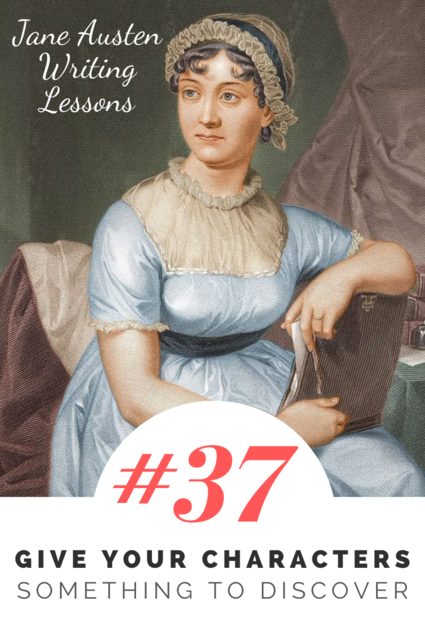
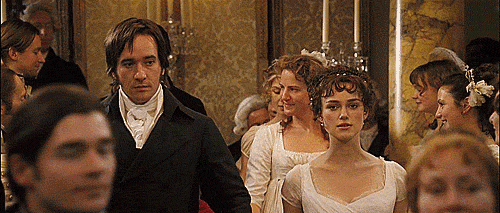

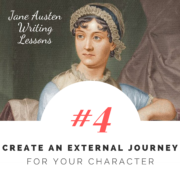
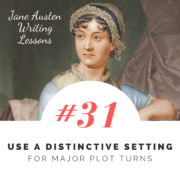
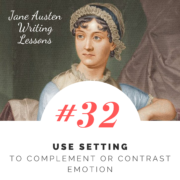
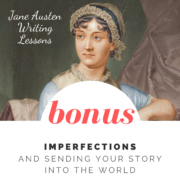
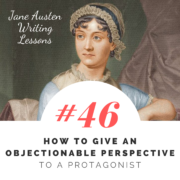
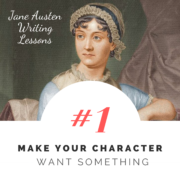


Leave a Reply
Want to join the discussion?Feel free to contribute!